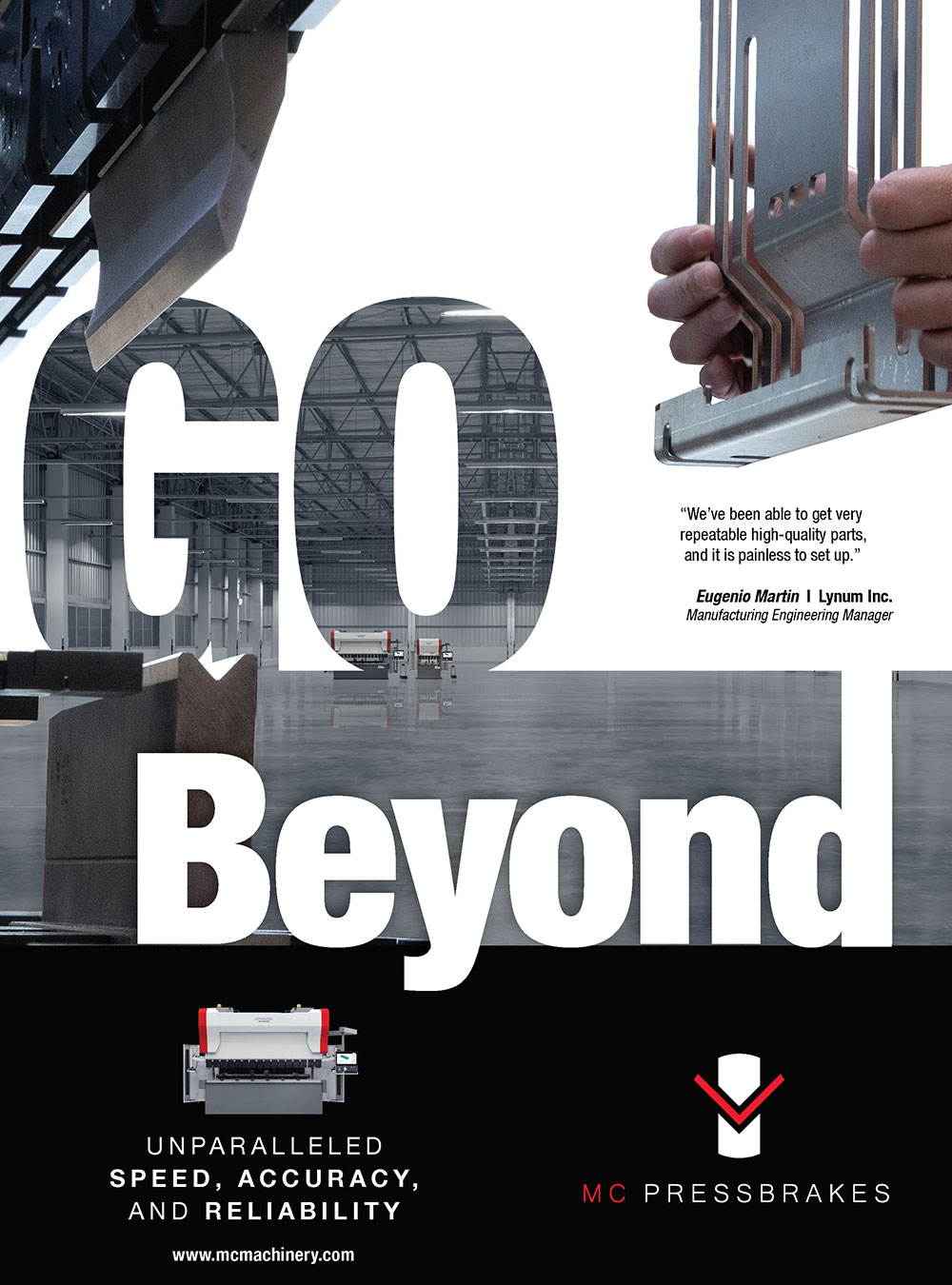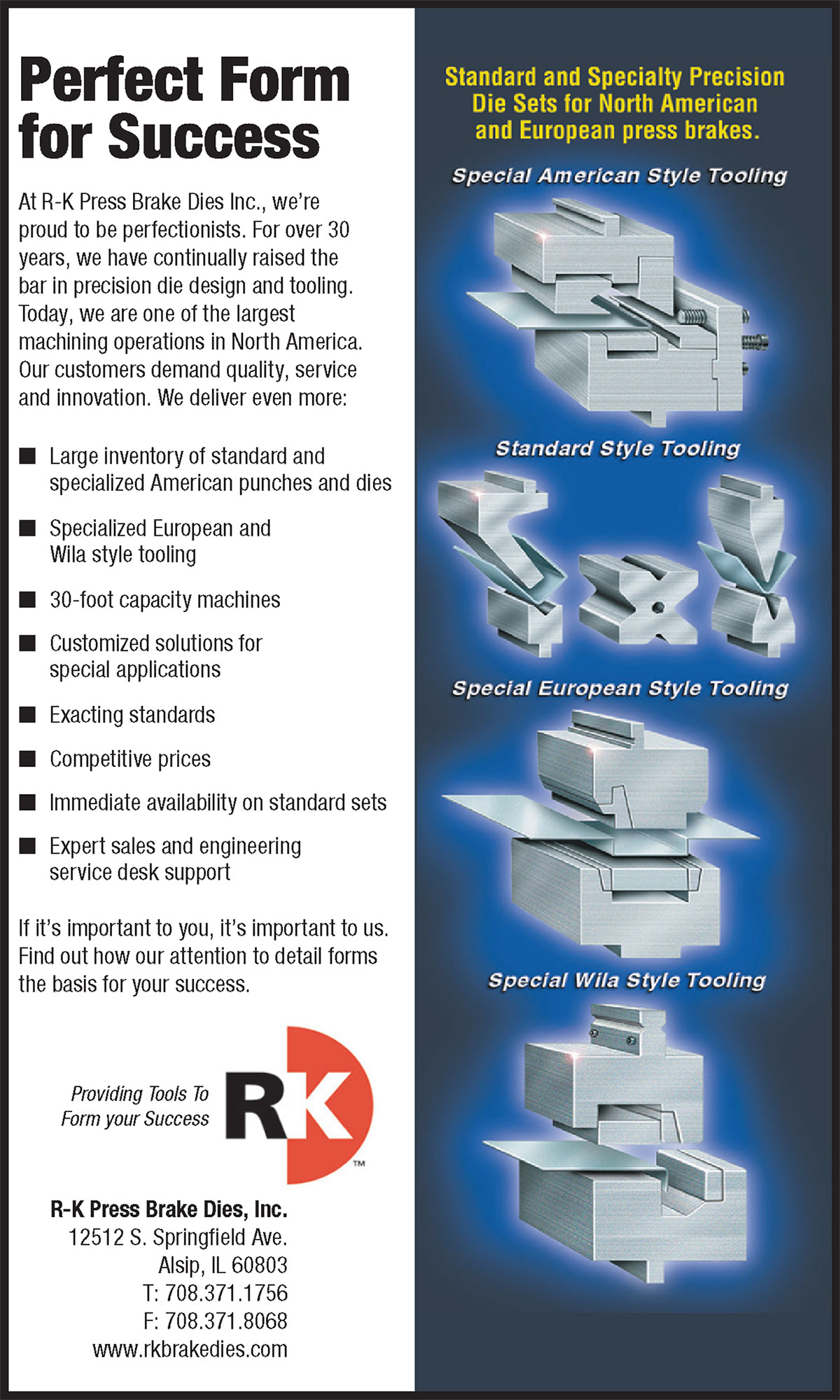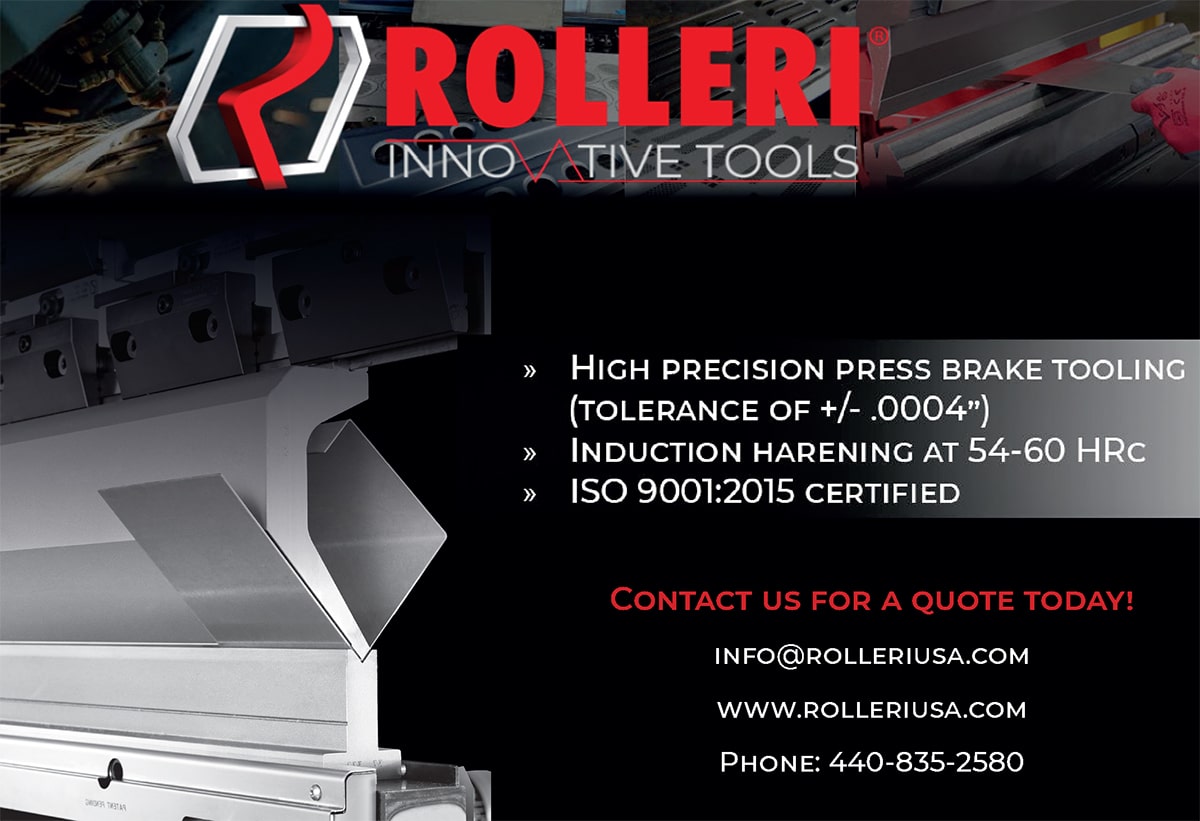odern products and the technology required to make them have changed the face of supply chains across the U.S. An era of specialists has emerged to perform work that used to belong exclusively to vertically integrated manufacturers like Ford or General Motors. For job shops with bending operations, it means managing multiplex parts, shrinking lot sizes and shorter delivery windows.
Press brake tooling can make or break productivity. For example, uneven punch and die heights can add minutes to processing because they typically require manual shimming and multiple setups. Mixing tooling styles can also cause bottlenecks and increase part costs because each punch requires its own setup.
Data collected by AMADA AMERICA INC. from workflow studies it conducted revealed that bending operations most often represented the largest area for improvement. To help solve some of these problems, the sheet metal equipment manufacturer developed AMADA Fixed Height (AFH) press brake tooling.
“AMADA has been making press brakes for more than 45 years,” says Robert Kolaczewski, tooling products manager for the equipment manufacturer. “We introduced AFH tooling more than 10 years ago, but sales have really taken off in the last five years and business has been steady despite the pandemic.”
AFH punches are through-hardened and precision ground to perform at tolerances of ±0.0008 in. Unlike conventional styles that come in different sizes, AFH punches offer different punch profiles [including gooseneck, straight sash and acute] but are all designed to a height of 120 mm. This means the press operator can combine different profiles in one common setup. The consistent punch height eliminates the need for frequent laser safety device adjustments. Punch profiles are also taller and narrower, which means they can accommodate a larger bending area.
“Reducing setup time is a major factor in increasing productivity,” says Kolaczewski. “Unlike Standard European style tooling where each bend can require its own setup, AFH tooling allows you to use a standard punch next to a gooseneck for deep channel parts and an acute style punch for 30-degree bend angles. One setup can be used for multiple jobs. This is critical for shops that have to bend a lot of different parts in small quantities throughout a work shift.”
 Reducing setup time is key to increasing productivity.
Reducing setup time is key to increasing productivity. 
AMADA AMERICA INC.
The tooling also provides a cost-efficient solution for job shops using stage bending to manage smaller order sizes and shorter lead times. Instead of changing setups for each bend a part may require, AFH tooling seamlessly completes the bending sequence with a single setup and supports safe stage bending across the length of the press brake.
AFH Die V-Bottom Relief allows material to flow, contributing to consistent bend angle accuracy. The addition of AMADA’s Hydraulic Clamping System reduces overall setup times by as much as 60 percent. An operator can lock and seat punches on the entire bed by simply turning on a switch.
Another AMADA innovation—the Bi-Slide bend angle sensor—works in concert with AFH dies. The high-speed, high-precision bend angle sensor is mounted on a linear guide rail that runs the length of the press brake’s lower ram. During the bending cycle, the Bi-S senses the workpiece’s position and feeds the information to the press brake’s CNC allowing an operator to measure and adjust bend angles on the fly. Scrap and setup times are reduced. The technology also puts an end to test bending. A job shop can produce high-accuracy bends the first time regardless of operator experience.
“It all comes down to reducing setup time and increasing output,” Kolaczewski says. “AFH tooling is readily available with inventory at AMADA’s California and New York locations. We get a part or CAD files from a customer, evaluate the application and determine the best solution required to bend the parts quickly and efficiently. We don’t just provide tooling, we’ve designed a system of critical components that work together to help job shops reach their goals despite market changes.”
For fabricators holding on to legacy tooling, Kolaczewski says embracing change can be difficult but a couple of factors have companies turning to AMADA for a solution. “Job shops are feeling the impact of reshoring as more parts re-enter the U.S. supply chain,” he notes. “Because of the pandemic, fabricators are also encountering parts they may not have quoted on before because they were too complex or costly to make. AFH tooling allows shops to revisit complex parts and form them with fewer setups.”

Video sharing platforms make it possible for customers to see AFH tooling perform. “We’re able to explain how AFH tooling can improve their workflow and make better quality parts faster,” Kolaczewski says. “Those job shops hesitant to switch over are usually sold on the reduction in setup time and the tooling’s flexibility to handle so many different types of jobs. Eighty-five to 90 percent of new AMADA press brakes are sold with AFH tooling packages. Dedicated tooling is no longer the trend. Versatility is the name of the game.”
Buena Park, California, 714/739-2111, amada.com.



